|
Printables |
PowerPoints |
Online exercises |
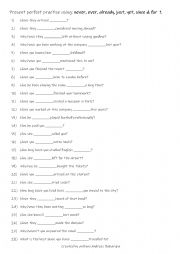
|
A2-B1 Present perfect practise using never, ever, already, just, yet, since & for 1
Practising the present perfect with words like never, ever, already, just, yet, since, and for is essential for students as it enables them to discuss experiences, recent events, and ongoing situations with clarity. These time markers help convey whether actions are completed, in progress, or relevant to the present, which is crucial for effective ...
Level: elementary
Age: 9-100
Type:
Downloads: 106
|
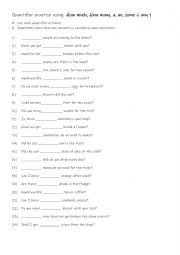
|
Quantifier practise using How much, How many, a, an, some & any 1
Students first familiarise themselves with the 6 quantifiers and their use. Then they complete the gap-fill with the correct word. Answers on page 2.
Level: elementary
Age: 7-100
Type:
Downloads: 103
|
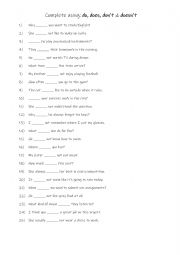
|
Complete using: do, does, don�t & doesn�t
Students read the sentences and question, then complete the gap fill using the correct form of do. Answers are on page 2
Level: elementary
Age: 10-100
Type:
Downloads: 102
|
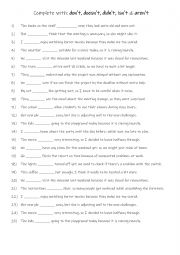
|
A1-A2 Complete with don�t, doesn�t, didn�t, isn�t & aren�t practise
Students read the sentences and complete the gap-fill with one of the following: with: don�t, doesn�t, didn�t, isn�t & aren�t. Answers on page 2
Level: elementary
Age: 8-3
Type:
Downloads: 127
|
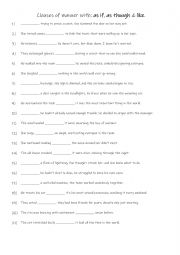
|
B1+-C1 Clauses of manner with: as if, as though & like.
Clauses of manner describe the way in which an action is performed. They often answer the question "how?" and are introduced by expressions like "as if," "as though," and "like."
"As if" and "as though" are typically used to describe a situation that is hypothetical or imagined. They can be followed by a verb in a past or present tense:
Past tens...
Level: advanced
Age: 12-100
Type:
Downloads: 122
|
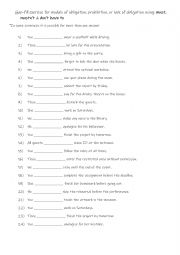
|
A2-B1 Gap-fill exercise for modals of obligation, prohibition, or lack of obligation using
Students familiarise themselves with the 3 modal verbs and their uses. They then read the sentences to see which modal verb is required to complete the gap-fill. Each modal is used 8 times. Answers on page 2.
Level: intermediate
Age: 9-100
Type:
Downloads: 118
|
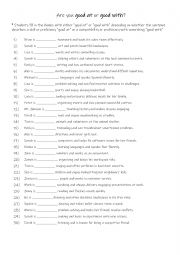
|
A2-B1 Are you good at or good with?
Students fill in the blanks with either good at or good with depending on whether the sentence describes a skill or proficiency good at or a compatibility or proficiency with something good with. Answers on page 2.
Level: intermediate
Age: 10-100
Type:
Downloads: 112
|
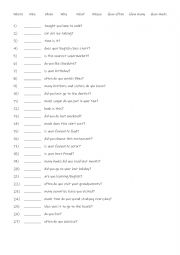
|
What is the question?
Students read the questions to see / work out which of the 9 given question words is needed to complete the question. After completing this exercise, students in pairs or small groups could use this worksheet for a speaking reinforcement activity. Answers on page 2.
Level: elementary
Age: 9-100
Type: worksheet
Downloads: 120
|
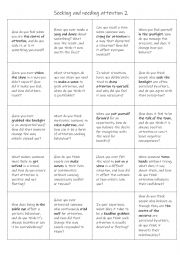
|
B1+-C1 Seeking attention idioms 2
This is a speaking reinforcement activity to supplement the other worksheet I uploaded on 15/1/2025. Students working in pairs or small groups can either ask each other the questions or answer the question themselves.
Level: intermediate
Age: 11-100
Type:
Downloads: 104
|
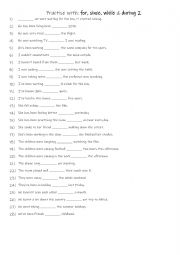
|
A2+-B1 Practise with for, since, while & during (2)
Learning to use for, since, during, and while is important because these words help student�s express time accurately in English, especially when talking about the duration and timing of events. For indicates the length of time an action takes place, while since pinpoints when an action started and continues until now, helping to show continuity. D...
Level: intermediate
Age: 9-100
Type:
Downloads: 111
|
|
|
|
|












